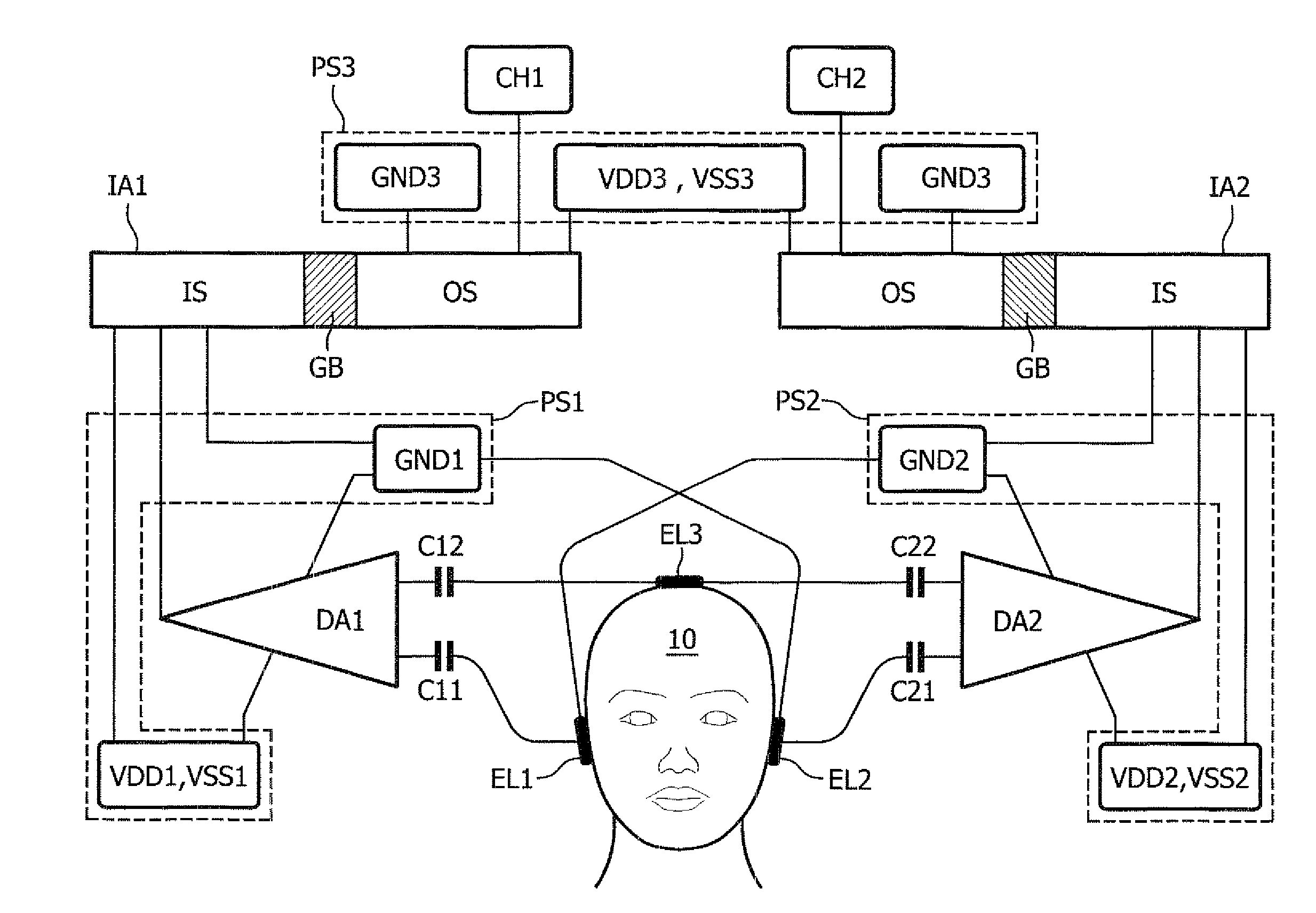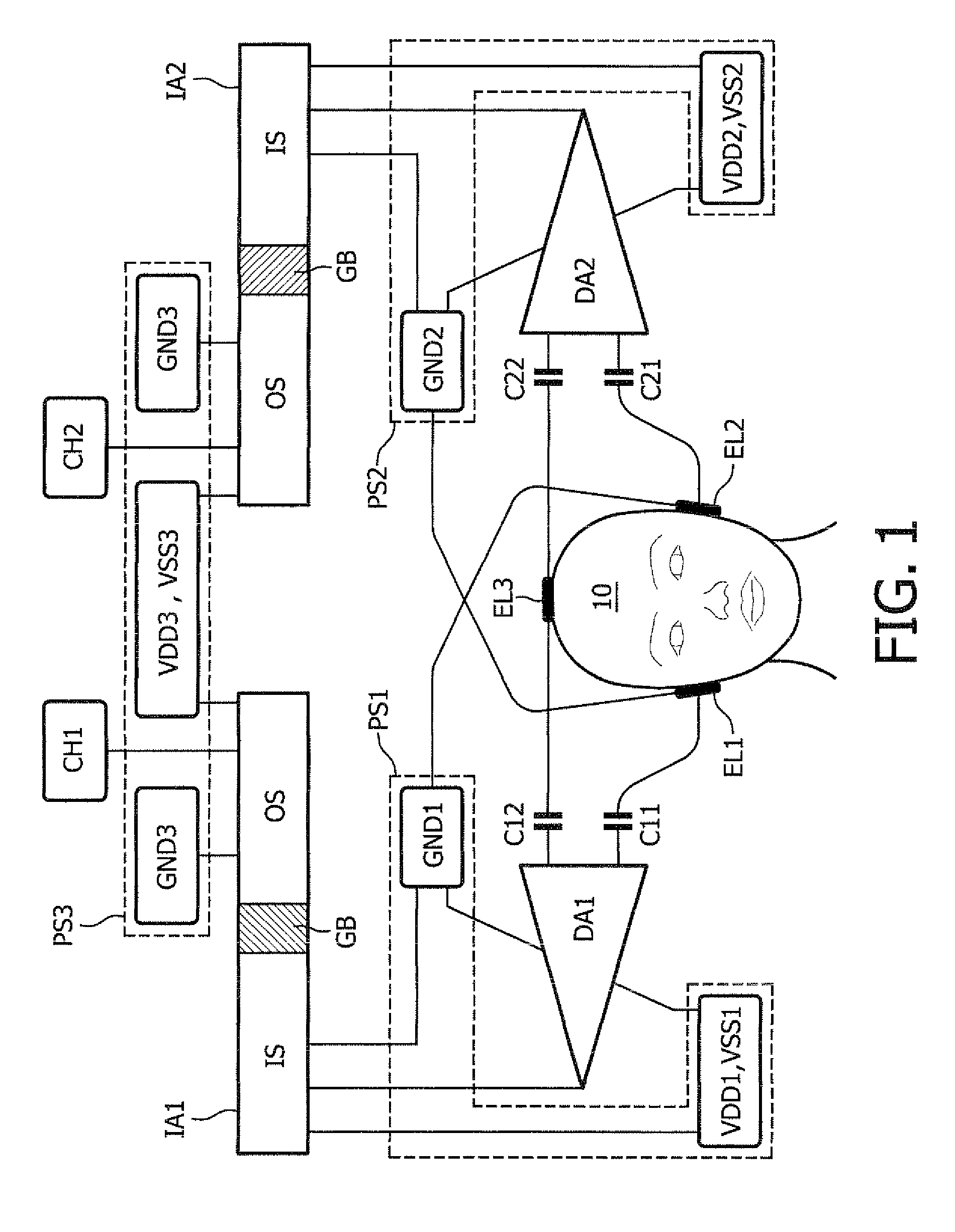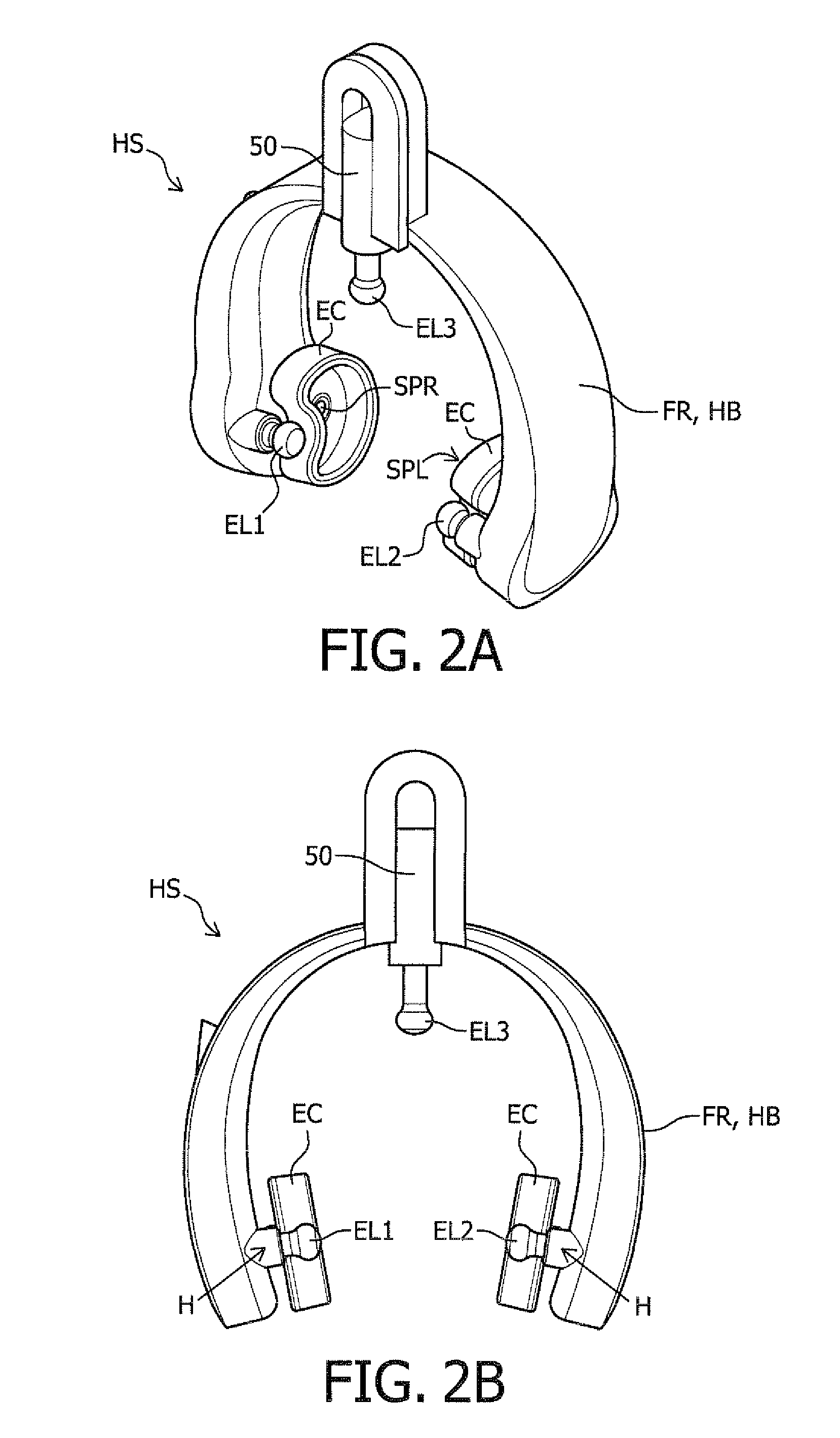Measurement of auditory evoked responses
a technology of auditory evoked responses and measurement methods, applied in the field of electroencephalogram signal measurement, can solve the problems of limited sensitivity in detecting children with a possible hearing loss, low sensitivity of the detection method, and inability to test the integrity of the neural pathway after the cochlea leading to the auditory cortex, etc., and achieve the effect of better conta
- Summary
- Abstract
- Description
- Claims
- Application Information
AI Technical Summary
Benefits of technology
Problems solved by technology
Method used
Image
Examples
first embodiment
[0133]FIG. 4a schematically illustrates a location of the first and second electrodes in accordance with the invention. In this figure the first region R1 and second region R2 for the first electrode are strip-shaped and substantially between the respective ear and the respective eye. The strip has a (virtual) midline ML which extends from an external auditory meatus of the respective ear to the nose (as illustrated in the figure). The strip has a width of about 6 centimeters.
second embodiment
[0134]FIG. 4b schematically illustrates a location of the first and second electrodes in accordance with the invention. This figure illustrates the first (further restricted with respect to FIG. 4a) region R1 and the second (further restricted with respect to FIG. 4a) region R2, wherein the strip has a width of about 4 centimeters. In a further embodiment the strip has a width of about 2 centimeters. Positioning the respective electrodes within this region further facilitates easy integration in the headset, but at the same time enables a better contact between the electrodes and the skin and also better visual inspection during the measurements. The restricted regions as illustrated in FIG. 4b generally more coincide with the cheek bone and are very suitable for placing electrodes.
third embodiment
[0135]FIG. 4c schematically illustrates a location of the first and second electrodes in accordance with the invention. This figure illustrates the first (further restricted with respect to FIG. 4b) region R1 and the second (further restricted with respect to FIG. 4b) region R2, wherein the strip has a width of about 2 centimeters. The first (even further restricted) region R1″ and the second (even further restricted) region R2″ substantially coincide with a location of the joint between the skull and the jaw. Experiments have shown that this region is particularly advantageous for positioning an electrode, while obtaining a very good contact (and thereby a very good signal-to-noise ratio).
[0136]FIG. 5 shows a shielded electrode in accordance with yet another embodiment of the invention. The shielded electrode comprises an electrode EL having a sensing area SAE which is connected to a signal wire WR (which is on its turn coupled to an amplifier). An electrically conductive shield (e...
PUM
 Login to View More
Login to View More Abstract
Description
Claims
Application Information
 Login to View More
Login to View More - R&D
- Intellectual Property
- Life Sciences
- Materials
- Tech Scout
- Unparalleled Data Quality
- Higher Quality Content
- 60% Fewer Hallucinations
Browse by: Latest US Patents, China's latest patents, Technical Efficacy Thesaurus, Application Domain, Technology Topic, Popular Technical Reports.
© 2025 PatSnap. All rights reserved.Legal|Privacy policy|Modern Slavery Act Transparency Statement|Sitemap|About US| Contact US: help@patsnap.com



